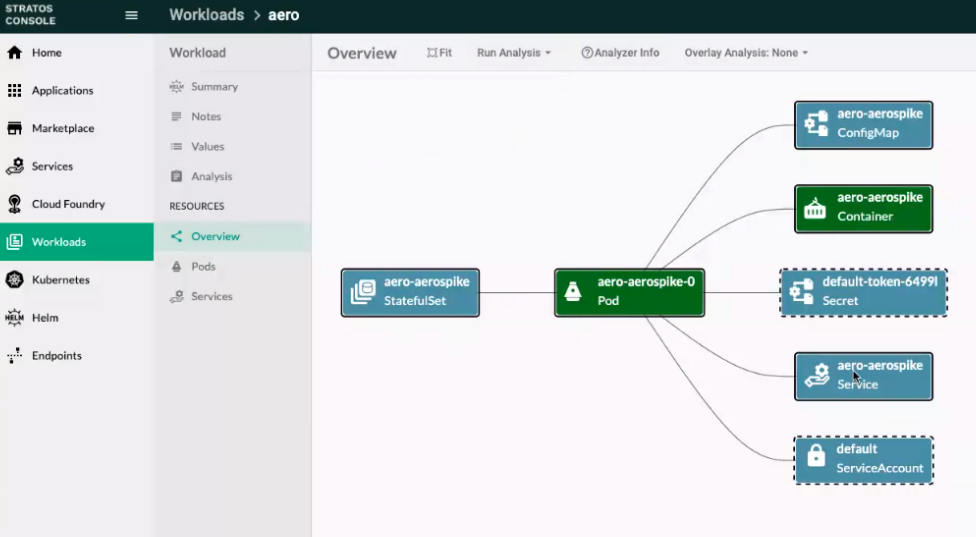Kubernetes Moves Fast! Keep Up the Easy Way with SUSE CaaS Platform
If you’ve been using Kubernetes for a while, then you already appreciate not only the most significant capabilities of the platform, but also the details of what’s new in every upstream release. And you probably understand something about the mixed blessing of a platform that is advancing so rapidly. Exactly how do you balance the benefits of all the latest go-fast features with the costs of updating your clusters as frequently as those new features come out? A challenging question, for sure!
Thankfully, SUSE CaaS Platform can help you stay on top of your Kubernetes game, even as the platform continues to evolve. SUSE delivers new capabilities regularly, along with the enterprise support and management tools you need to ensure their smooth integration into your live environment. SUSE CaaS Platform helps you keep up, without falling down.
Already this year SUSE has delivered eight updates to SUSE CaaS Platform, including significant new releases introducing Kubernetes 1.16 and 1.17 and related technologies. Continuing that dependable pattern, SUSE is pleased to announce availability of SUSE CaaS Platform 4.5, based on Kubernetes 1.18 and packed with new capabilities sure to please every enterprise user.
What’s New in SUSE CaaS Platform 4.5?
Updates to SUSE CaaS Platform start right at the foundation: tracking closely to upstream, the 4.5 release is built on Kubernetes 1.18 and also incorporates the latest version of its embedded operating system, SUSE Linux Enterprise Server 15 SP 2. Building on this base, SUSE CaaS Platform 4.5 adds a trove of new capabilities that help you accelerate critical workload performance, simplify workload and Kubernetes cluster management, and strengthen your Kubernetes security posture.
Let’s take a closer look at what you can do with the new release:

Accelerate critical workload performance with new support for hardware and operating system accelerators that allow you to take full advantage of your servers’ advanced processing and large memory resources.
- Speed execution of many compute intensive workloads with GPU support that provides as much as 50x performance gains for GPU-enabled applications. The significance of these applications is growing rapidly, as enterprises increasingly rely on them to run AI/ML models, advanced visualizations, big data processing, speech recognition, and more. Now you can successfully execute these demanding business-oriented workloads on Kubernetes infrastructure, and manage them with the same tooling you use to manage other enterprise software.
- Accelerate high-performance database applications with expanded HugePage support, leveraged by large in-memory databases such as Redis, Cassandra, and Aerospike. A new 1Gi HugePage size option expands existing 2Mi HugePage support to serve these lightning fast databases and the critical-response-time applications they drive. In addition, container isolation of HugePages ensures that they do not consume more memory than requested, to prevent accidental starvation of other workloads.
- Improve application performance with local DNS caching that resolves internal network addresses more quickly to speed communications between application components.

Simplify workload and cluster management with tools that ease analysis and debugging of clusters and workloads.
- Assess workload status more rapidly with a graphical workload viewer that enables you to quickly understand workload resources, relationships, health, and more.
- Ensure robust cluster configuration with cluster and resource analysis tools that detect misconfigurations based on commonly accepted best practices. Use the Popeye analyzer to help you improve security, performance, and availability in your cluster. You can view analysis results as a report, or as a visual overlay in the workloads viewer for a clear picture of where your cluster is not up to standard.
- Accelerate application testing and debugging with dry run support that enables developers to rapidly validate workload interactions with a Kubernetes cluster, without repeatedly modifying and resetting the workload state.
- Simplify Helm chart management with a unified repository for container images and Helm charts, introduced as an experimental capability in Helm 3.

Strengthen your security posture by reducing cluster threat surface, simplifying certificate maintenance, and protecting your host operating system.
- Tighten cluster security with Helm 3, the latest release of the popular package manager for Kubernetes. Helm 3 eliminates Tiller, the server-side component used in Helm 2, closing a potential privilege escalation vulnerability and reducing the cluster’s exposed threat surface. Access control is now deferred directly to Kubernetes, enabling additional security protections, such as encryption of chart metadata.
- Simplify maintenance of security certificates with automated certificate rotation that enables you to renew certificates quickly and reliably. For hassle-free management, simply configure the system to automatically renew certificates before they expire, on a schedule that meets your internal security compliance requirements. You can also manually trigger the certificate update process to rapidly respond to an immediate security threat.
- Protect your container host operating system with industry-leading OS maintenance, which includes ongoing protection against emerging cybersecurity vulnerabilities and exposures, now delivered on the latest and most secure version of SUSE Linux Enterprise.
SUSE is delighted to provide ever-more value to our customers and encourages you to update to SUSE CaaS Platform 4.5 today.
If you are not an existing user, now is a great time to explore all that SUSE CaaS Platform has to offer: download your 60-day free trial now!
Related Articles
Jul 22nd, 2022
No comments yet